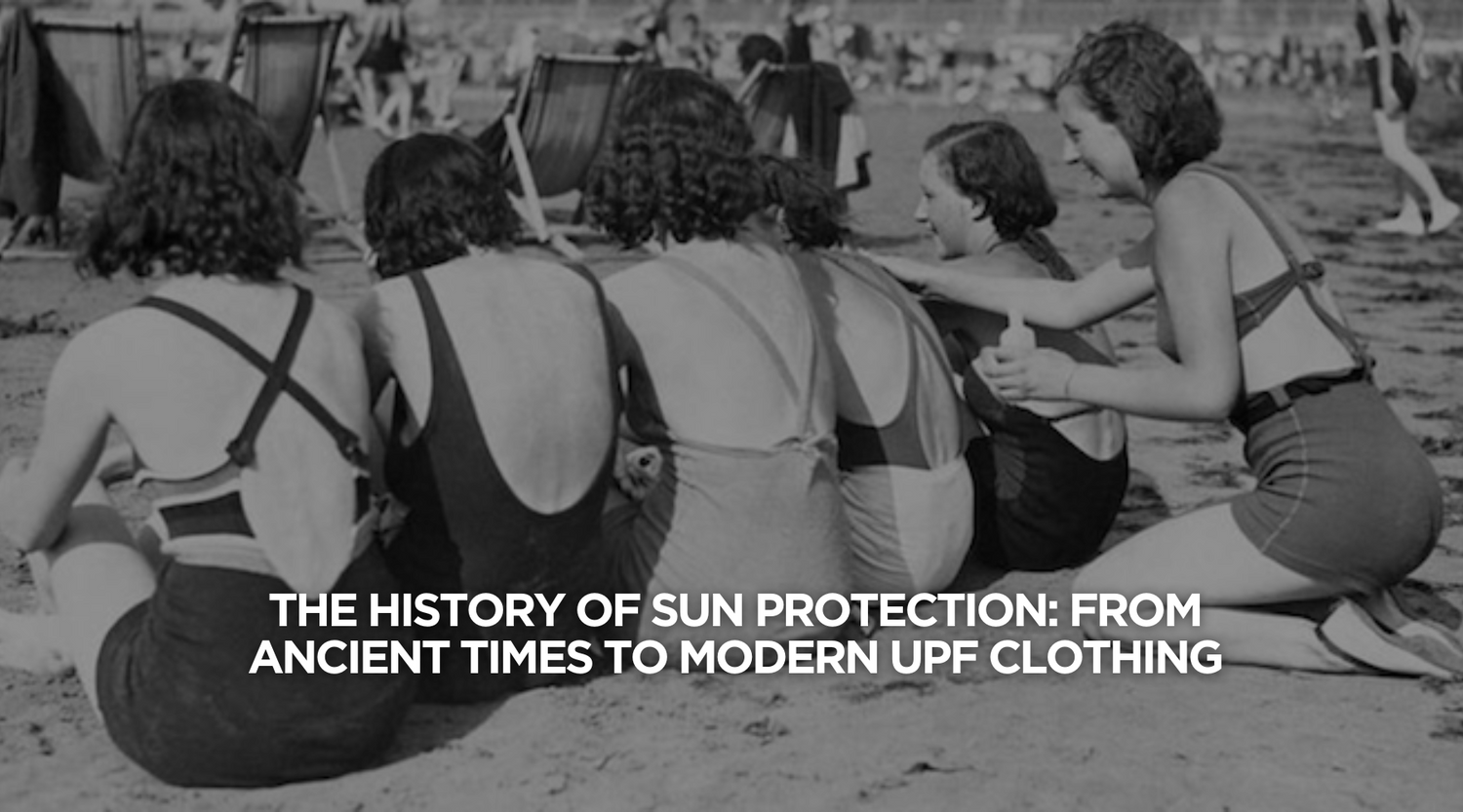Sun protection has been a concern for humans long before modern science revealed the dangers of UV rays. While today we rely on sunscreen and UPF50+ clothing to guard against sunburn and skin cancer, ancient civilizations had their own ingenious methods to shield themselves from the sun. Let’s explore how sun protection has evolved through history and how SParms’ modern UPF gear offers the ultimate solution for today’s sun-conscious world.
Ancient Sun Protection Methods
1. Umbrellas and Parasols
The umbrella, which we often associate with rain, was originally created to shield people from the sun. Ancient Egyptians used parasols made of palm leaves, papyrus, and feathers to protect their skin from the scorching sun. Similarly, in China, parasols made of silk were used as early as 1,200 BC, combining sun protection with status and elegance.
2. Natural Coverings
In desert regions, people relied on loose-fitting robes and head coverings made of natural fibers like cotton and wool to protect their skin. These garments provided both shade and airflow, allowing the body to stay cool while avoiding direct sun exposure. The Tuareg people of the Sahara, for instance, are famous for their indigo-dyed veils, which shield their skin and reflect sunlight.
3. Early Sunscreens
The ancient Greeks and Egyptians used oils and plant extracts to protect their skin. Ingredients like olive oil, jasmine, and rice bran were believed to block or absorb sunlight. Zinc oxide, still a common ingredient in modern sunscreens, was used by ancient Egyptians as a natural sunblock.
4. Architectural Innovations
In ancient Rome and Greece, buildings were designed with sun protection in mind. The Romans used awnings to shade their amphitheaters, including the Colosseum, from the sun. Courtyards, porticos, and shaded pathways were common features in both Roman and Islamic architecture to offer respite from intense sunlight.
The Birth of Modern Sun Protection
1. Early 20th Century
By the early 1900s, tanning became a fashion statement, and people began intentionally exposing themselves to the sun. However, the link between sun exposure and skin damage quickly became apparent. In the 1930s, the first commercial sunscreens were developed, offering rudimentary protection against UV rays.
2. The Invention of SPF
In 1962, the Sun Protection Factor (SPF) rating system was introduced, allowing consumers to measure the effectiveness of sunscreen. This breakthrough helped people understand the importance of protecting their skin during prolonged sun exposure.
3. Development of UPF Clothing
The concept of UPF clothing—fabric specifically designed to block UV rays—emerged in the late 20th century. Advances in textile technology made it possible to create lightweight, breathable fabrics that offered the same, if not better, protection as sunscreen, without the need for reapplication.
Modern Sun Protection: UPF50+ Clothing by SParms
Today, we have access to the most advanced forms of sun protection, and UPF50+ clothing has revolutionised the way we protect our skin. SParms combines cutting-edge technology with comfort and style to offer sun protection that’s effective and easy to wear.
Why UPF50+ Matters
- Blocks 98% of UV Rays: UPF50+ clothing provides consistent protection without the need for reapplication, unlike sunscreen.
- Lightweight and Breathable: Modern fabrics, like those used in SParms products, are designed for all-day comfort, even during high-intensity activities.
- Versatile Protection: SParms offers a range of products, from sun sleeves and shoulder wraps to neck gaiters, gloves, and leg sleeves, catering to every lifestyle and activity.
SParms: A Modern Solution with Ancient Roots
Just as ancient civilizations relied on loose fabrics, natural coverings, and ingenious innovations to protect themselves, SParms builds on those principles with modern technology. The lightweight, moisture-wicking materials used in SParms products are perfect for today’s active lifestyles, whether you’re golfing, cycling, fishing, or simply enjoying a day outdoors.
The Future of Sun Protection
As awareness of skin cancer and UV damage grows, the future of sun protection will likely see even more innovation. Wearable UV sensors, eco-friendly sunscreen formulations, and smart fabrics with embedded sun protection technology are already making waves in the industry.
One thing remains clear: preventing sun damage is essential, and combining modern solutions like UPF50+ clothing with timeless strategies like seeking shade and wearing wide-brimmed hats ensures that we stay safe under the sun.
